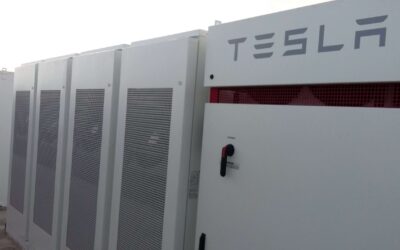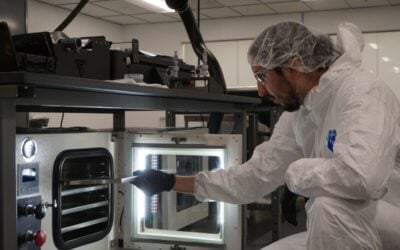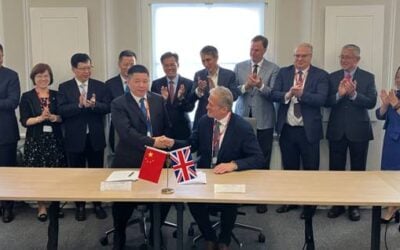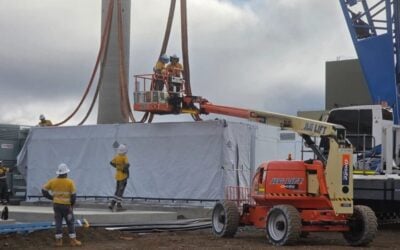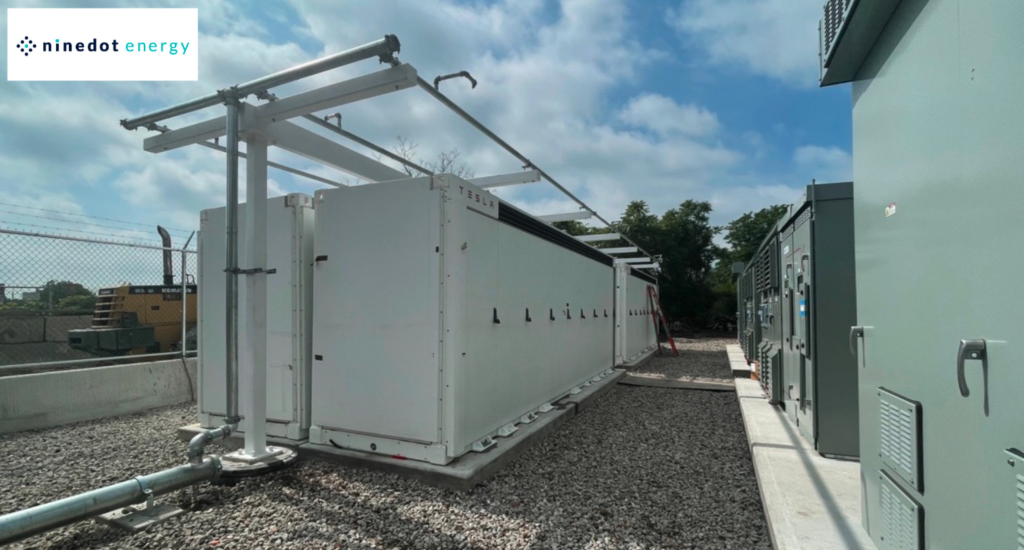
Tesla continues to sell battery storage systems faster than it can make them, with the company reporting record-high quarterly deployments in Q3 2022.
Tesla’s residential Powerwall and large-scale Megapack battery energy storage system (BESS) deployments for the third quarter were 2,100MWh, a 62% year-on-year increase from Q3 2021’s 1,295MWh.
Enjoy 12 months of exclusive analysis
- Regular insight and analysis of the industry’s biggest developments
- In-depth interviews with the industry’s leading figures
- Annual digital subscription to the PV Tech Power journal
- Discounts on Solar Media’s portfolio of events, in-person and virtual
That also represented an 85% upward push from the previous quarter’s 1,133MWh and more than double the two preceding three-month reported periods before that.
Energy generation and storage – including solar PV – earned the company US$1.117 billion revenues, versus cost of revenues of US$1.013 billion. As CFO Zachary Kirkhorn pointed out in an earnings call to explain, the results pushed it to its strongest gross profit for the segment to date of US$104 million. That bettered the last quarter, which was also a record at the time with US$97 million gross profit for the segment.
That was very much driven by Powerwall and Megapack product sales, with Tesla continuing to fall below the 100MW mark for quarterly solar PV deployments. In the third quarter of this year, the company made 94MW of solar PV deployments, which was a 13% year-on-year increase from Q3 2021’s 83MW, but below the 106MW reported in the second quarter of this year.
As reported by our colleagues at PV Tech at the time, the Q2 2022 figure was actually Tesla’s biggest quarter for solar in over four years, since Q3 2017, when it installed 109MW.
The company’s main business line in electric vehicles (EVs) also grew, with Tesla producing and delivering a record number of vehicles and achieving operating margin across its businesses of 17.2%.
CEO and product architect Elon Musk said in the earnings call that Tesla expects to sell every car it produces. Even so, he also said the company believed the stationary energy storage segment could grow even faster than EVs, at a rate of as much as 200% every year.
This is based on its critical role in enabling higher shares of wind and solar PV on the world’s energy systems, Musk said. However, solar PV barely got a mention in the earnings call, with callers mostly focusing on EVs and to a lesser extent stationary energy storage.
Tesla’s dedicated Megapack grid-scale BESS gigafactory in Lathrop, California, is currently ramping up to its planned 40GWh annual production capacity to help meet demand.
In July, CFO Zachary Kirkhorn said production of energy storage systems is constrained by component supply issues, and this remains the case.
While EV production is limited to some extent by lithium battery availability, and so is stationary storage, the latter is more subject to global semiconductor shortages that have affected a wide range of industries.
Kirkhorn said other challenges are coming from raw materials, logistics and foreign exchange, with the US Dollar particularly strong at the moment. But, as both he and Musk said, commodity and shipping prices are coming back down – for everything except perhaps battery-grade lithium, the cost of which, Musk said, is still “crazily expensive”.
Tesla “fully expects” Inflation Reduction Act incentives for US production
Musk said that “at a high level,” Tesla expects that it will be able to “fully meet” requirements of the Inflation Reduction Act (IRA) to avail of incentives for locating key parts of its US value chain domestically.
In response to a shareholder question on the topic, Kirkhorn pointed out that detailed guidance hasn’t yet been published by the US Treasury and is expected to be forthcoming at the end of this year.
“Until such time, it’s difficult to fully determine the eligibility criteria, but we believe Tesla is very well-positioned to capture a significant share of that for solar, storage and also electric vehicles,” the CFO said.
Batteries are a critical component of the IRA’s emphasis on incentivising low carbon sustainable energy. Musk said Tesla’s long-term ambition is to ramp up to a terawatt-hour of US-based battery production a year.
Earnings call transcript by The Motley Fool.

